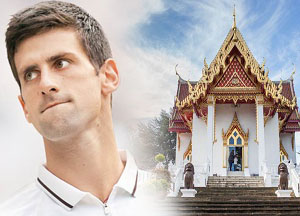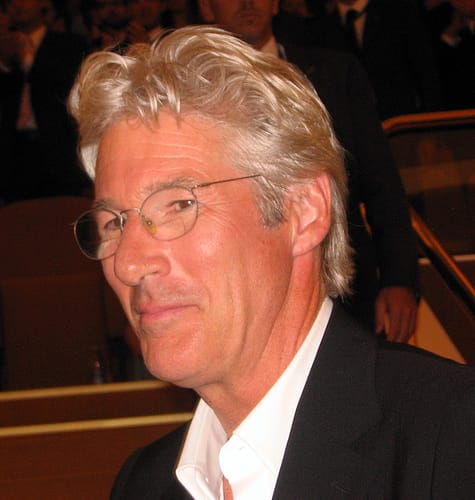Dharma companions is a blog focusing on Dharma activities, information dissemination and bringing awareness to the multifaceted aspects of Buddhism for the community from Shah Alam Buddhist Society (SABS). Postings should be of interest to Buddhist and anyone who seeks information on Buddhism. As the title suggest, we also aim to be a companion to those who seeks our company in this path that we undertake. May you be well, happy and peaceful.
Saturday, August 15, 2015
Friday, August 14, 2015
Why Best-Selling Author Matthieu Ricard May Be the Hardest Working Man in Buddhism
By Joseph Hooper, New York Observer, June 17, 2105.jpg) Mr. Ricard first came to prominence some fifteen years ago with his international bestseller The Monk and the Philosopher, a dialogue between himself, a promising biologist-turned-Tibetan-monk, and his father, Jean Francois Revel, an aging lion of secular French intellectualism. Mr. Ricard hit another level of pop renown as the star subject of Mr. Davidson’s groundbreaking research measuring how long-term meditation could change the structure and the function of the brain as revealed in functional MRI images. Mr. Ricard first came to prominence some fifteen years ago with his international bestseller The Monk and the Philosopher, a dialogue between himself, a promising biologist-turned-Tibetan-monk, and his father, Jean Francois Revel, an aging lion of secular French intellectualism. Mr. Ricard hit another level of pop renown as the star subject of Mr. Davidson’s groundbreaking research measuring how long-term meditation could change the structure and the function of the brain as revealed in functional MRI images.Mr. Ricard’s brain showed the most gamma wave activity, associated with the positive emotions, and so the media dubbed him, “the happiest man in the world.” These days, an equally accurate moniker might be, “the hardest working man in Buddhism,” or possibly, outside the Dalai Lama, the best connected one. Besides the St. John event, Mr. Ricard discussed his book with ubiquitous Buddhism-booster Richard Gere at the 92nd Street Y two days earlier. |
Labels:
Inspirational,
Teacher
Location:
Shah Alam, Selangor, Malaysia
Thursday, August 13, 2015
Wimbledon 2015: Novak Djokovic and the Buddhist temple minutes from Centre Court that helps him maintain his winning ways
by Chris Green, The Independent, 5 July 2015
 The Buddhapadipa Temple is regular refuge for the world No 1
The Buddhapadipa Temple is regular refuge for the world No 1“I try to put myself only in the present moment, not fight against the thoughts and the pressure and the excitement, but just acknowledge them and be aware of present thoughts but also try to keep my composure and calm,” the defending champion said. “I try to just be in the moment and enjoy.”
Labels:
Opinion,
Skillful Practice
Location:
Shah Alam, Selangor, Malaysia
Wednesday, August 12, 2015
Understanding Buddhist-Muslim relations in Burma (Myanmar)
by Justin Whitaker, Patheos, June 16, 2015
Yangon, Myanmar -- Is Myanmar approaching genocide?
This was the question, and in fact the headline haunting my google news feed for much of the month of May. Today the plight of the Rohingya in Myanmar (or Burma as many still call it)* is far from certain, and the history which has brought us here is even more clouded. Bhikkhu Subhuti welcomes the local Imam, Myanmar Bhikkhu Subhuti welcomes the local Imam, Myanmar Studying Burma/Myanmar is often neither science nor social science, but more akin to art, where truth is in the eye of the beholder. Consequently, different interpretations abound. – Steinberg Burma/Myanmar: What Everyone Needs to Know (2009), p.10As such, I offer this interpretation as an academic student of Buddhism for 15 years, writing here and elsewhere about Burma for a little over 10 years, and as a global citizen struck by wonderful and ongoing friendships with Muslims for going on 8 years. So, taken in turn, I’ll try to briefly describe the Buddhism of Burma, the country as I know it today, and some of the roots of the violence toward Muslims there. |
Labels:
Interfaith,
Opinion
Location:
Shah Alam, Selangor, Malaysia
Tuesday, August 11, 2015
Nepal Earthquake: Reaching the Village of Bhaiselitol in Panchkhal District
By Bhante Y. Wimala, The Buddhist Channel, July 20 2015Bhante Wimala's report on his humanitarian effort to reach isolated villages affected by the recent earthquake in Nepal Kathmandu, Nepal -- As we continue our humanitarian relief effort to help people in devastated villages that are hard to reach (where nobody has reached them yet or very few have reached), this time we found ourselves at the village of Bhaiselitol.  At the request of Captain Pradip, the Nepali army officer who has been helping us, we were able to reach Bhaiselitol Village and distribute many essential, urgently needed supplies. At the request of Captain Pradip, the Nepali army officer who has been helping us, we were able to reach Bhaiselitol Village and distribute many essential, urgently needed supplies.Cap. Pradip also described how a lot of houses there have been completely destroyed and the rest of them badly damaged. The residents of Bhaiselitol needed food and they also have requested roofing material so that they can build their own temporary houses. |
Labels:
Inspirational,
Location,
Teacher
Location:
Shah Alam, Selangor, Malaysia
Monday, August 10, 2015
Richard Gere: My Journey as a Buddhist
Melvin McLeod, May 1, 1999
Richard Gere talks about his many years of Buddhist practice, his devotion to his teacher the Dalai Lama, and his work for Tibetan freedom.
I suppose it’s a sign of our current cynicism that we find it hard to believe celebrities can also be serious people. The recent prominence of “celebrity Buddhists” has brought some snide comments in the press, and even among Buddhists, but personally I am very appreciative of the actors, directors, musicians and other public figures who have brought greater awareness to the cause of Tibetan freedom and the value of Buddhist practice. These are fine artists and thoughtful people, some Buddhists, some not, among them Martin Scorsese, Leonard Cohen, Adam Yauch, Michael Stipe, Patti Smith, and of course, Richard Gere. I met Gere at his office in New York recently, and we talked about his many years of Buddhist practice, his devotion to his teacher the Dalai Lama, and his work on behalf of the dharma and the cause of the Tibetan people.
Labels:
Inspirational
Location:
Shah Alam, Selangor, Malaysia
Sunday, August 9, 2015
Piya Sutta
Labels:
Understanding
Location:
Shah Alam, Selangor, Malaysia
Subscribe to:
Comments (Atom)


